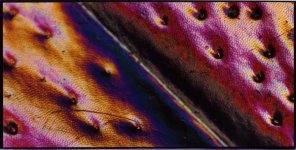Finder
Veteran
As I say elsewhere, I am open to being convinced, and it's late now and I'm tired. But as far as I can see, you can't separate reflection and transmission. A quarter-wavelength coating can only be set up for the destructive interference of a specific wavelength, which is by definition suppressed. All other wavelengths are reflected or transmitted to some degree. The light passing through is therefore 'white light' minus the suppressed wavelength(s) - which is a colour shift.
Also, Leica makes specific reference to using coatings to regulate colour balance: Google it and you'll find it. I'll read it tomorrow when I'm wider awake.
Cheers,
R.
Why can't you separate reflection and transmission? Reflected light is flare. Transmitted light will form an image. Transmitted light and reflected light are separated at the optical surface. The optical surface, as you pointed out, reflects all wavelengths. So does the coating. It also transmits all wavelengths. So where is the suppression of one wavelength over the other?
The only thing that is happening is that the reflected light from the surface of the coating and the glass are kept 1/2 a wavelength apart (after they are reflected) which is what is needed to eliminate them through destructive interference. This "suppresses" the flare. That has nothing to do with the transmitted light which is still in phase--passing the optical surfaces does not change that.
Coatings also improve transmission. Improved transmission and reduced flare has the ability to improve many things including color rendition. But optics, including Leica optics, should be color neutral. A color shift introduced by the optics would not be ideal.
BTW, I did Google your suggestion. I did not find anything.





